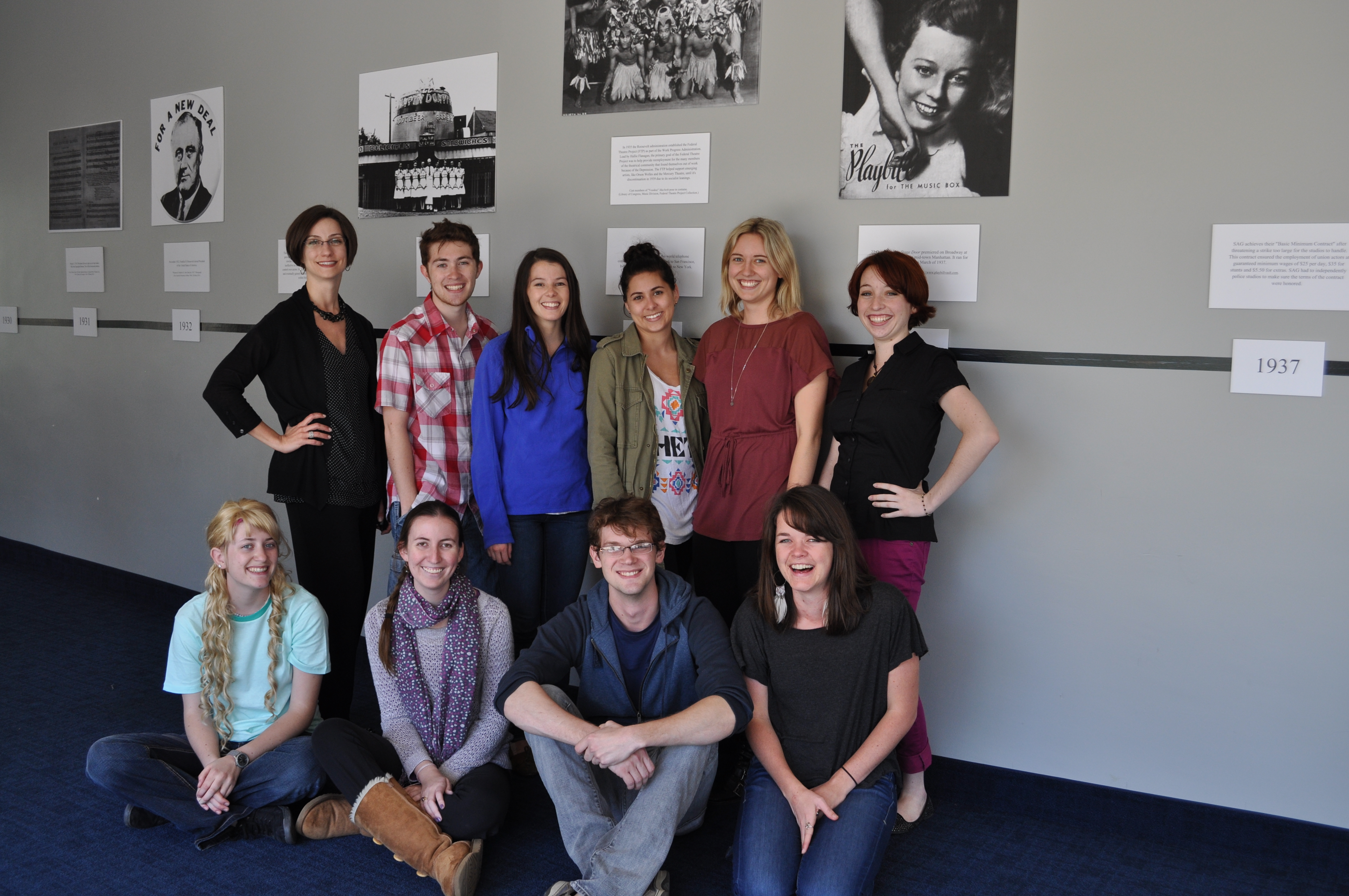When the play Stage Door opens this week at Chapman University’s Waltmar Theatre, audiences will be transported to 1930s New York and into the lives of aspiring actresses vying for their big break. The music, costumes, sets and even the cast members’ little moves – the way a gentleman protectively guides his date by offering his arm as they walk along a sidewalk, for example – have all been researched, planned and implemented to build a realistic setting for one of Broadway’s classic comedies.
And that’s all thanks to the dramaturgs. Yes, you read that correctly. Dramaturgs.
They are the theatre professionals who support the director, cast, crew and playhouse management with production planning by analyzing plays and researching the language, culture and history of its setting. This semester the Department of Theatre offered its first dramaturgy class and the debut team of dramaturgy students has plunged into the shaping of Stage Door’s 1930s look. They even planned a lobby display to help audiences better understand Depression-era urban life and the screwball comedies of 1930s.
“It gives the audience a context for the world of the play,” says Jocelyn Buckner, associate professor and the course instructor. And it adds mood and flavor, sometimes literally, as in the case of this production. The students are planning a lobby refreshment stand that will feature vintage candy.
But audiences aren’t the only winners. The students are all theatre majors with professional acting goals, but nevertheless say they’ve been intrigued by the tradition of dramaturgy, which depending upon the playhouse can include responsibilities for new play development as well as planning theatre education and audience engagement programs.
“I found this huge passion for dramaturgy. It surprised me how much I love it,” said Peyton Ashby ’15.
As evidence, his classmates tease him about his ecstatic reaction during a research session at Leatherby Libraries when he discovered a newspaper advertisement touting one of the latest innovations during the time period of Stage Door – the use of zippers in men’s trousers.
“I geeked out. It was so cool,” he says.
Indeed, dramaturgs are the research stars of theater companies, Buckner says. So one of the first projects of the semester was the creation of the StageDoorDramaturgyBlog where students posted 1930s research relevant to understanding the play’s themes, as well as its setting and the history of the The Rehearsal Club, which inspired the Edna Ferber and George S. Kaufman play.
That research opportunity was eye-opening for Anton Gress ’15, who said the experience helped him understand how dramaturgy links creativity and theatre scholarship.
“You get to apply your theater knowledge in a lot of different ways and you get to be an integral part of the creative process,” Gress says. “It gives you a wonderful, all-encompassing knowledge of theatre.”
Stage Door opens Thursday, April 4, and continues Friday and Saturday, April 5 and 6, and Thursday, Friday and Saturday April 11-13. All performances are at 7:30 p.m., with an additional 2 p.m. show Saturday, April 13. Tickets are $10 to $20 and available online or by calling the Chapman University Ticket Office at (714) 997-6812, Monday through Friday from 9 a.m. to 4 p.m.





Add comment